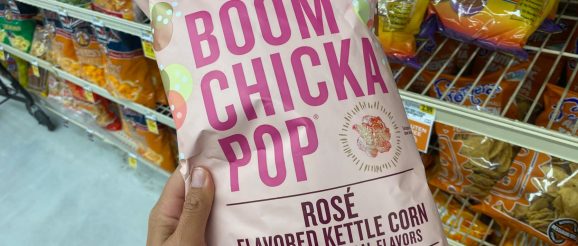The Stockout: Branding agency Interact highlights packaging innovation and pitfalls


On last week’s The Stockout show, I interviewed Fred Hart, partner and creative director of Interact, a branding agency in Boulder, Colorado.Fred works with a wide range of CPG companies on packaging and branding that stands out in crowded fields of products. The show can be seen here.
For those without the 26 minutes to spare, or who just prefer a written version, here is my paraphrased high-level advice on CPG packaging and branding from Interact:
Items should appear differentiated on shelves without being different for different sake. Interact advises its clients to “challenge the category, not the consumer.” Essentially, that means avoiding common category tropes by putting a unique spin on packaging that communicates the essence of the brand. One example is BOOMCHICKAPOP, which innovated in the popcorn category by being the only brand on shelves with no photographs of popcorn. Trusting that consumers already know what popcorn looks like, the snack maker opted for stylized graphics and bright colors that conveyed fun. Meanwhile, Interact also stresses that it’s unproductive for brands to be different for different sake and packaging works best when it simply puts a spin on what consumers are already familiar with.
Avoid Nascar-izing product labels. Some product packaging tries to check all the boxes by overwhelming the label with numerous claims related to nutrition, sustainability, a company story, its social values, and the list goes on. Applying labels like ads on a stock car demonstrates that the CPG company doesn’t know its core clientele and, by trying to say everything, little gets through to consumers. Instead, brands should focus on just one or two areas that are important to consumers, such as XYZ energy bar has 30 grams of protein.
Don’t be slavish to industry trends. Certainly, there are some prevailing industry trends in CPG and packaging. The premiumization of products and the shift away from plastic bottles to cans or paper-based containers are two such trends that I have covered in The Stockout. In the face of those trends, there remain plenty of consumers who are seemingly not with the times. Many consumers remain price buyers and many beverage consumers still prefer plastic bottles because they are lightweight and can be tightly resealed. The key is to know and understand your customer base.
What works online doesn’t always translate to the store. Many of the newer consumer brands originated as direct-to-consumer online-only brands. Successful DTC brands typically carve out a niche online and their initial success is driven by a relatively small number of dedicated fans. When those brands hit shelves for the first time, they have to win the mind share and wallet share of consumers who habitually buy a competitor’s product. So newer products really need to stand out on shelves to compete against incumbent brands and to sell to consumers who lack the strong preferences of a DTC brand’s initial customers.
Interact worked with a soap maker named Dr. Squatch on that transition from online to store shelves. From the packaging, it was clear to the male customers it was targeting that it was not their moms’ soap. The art and humor on the packaging made it one of few offerings targeting men and conveyed the message that it was a natural alternative to the larger brands. The unique approach translated into conquest sales.
Branding is critical after DTC brands are acquired. Successful DTC brands have been frequently acquired by much larger, household-name multinational companies as the major CPG companies have expanded into higher-growth areas. That association can alienate the core customers that made the DTC brand successful in the first place. Therefore, it is important for formerly independent DTC brands to use packaging to maintain differentiation from the parent company while also conveying the uniqueness of the products.
Show, don’t tell. Interact worked with Boulder Canyon on packaging for chips that bucked the industry trend. Most other chip packaging focused on the quantity of the chips in the bag while Boulder Canyon used close-up images of just a few chips to highlight texture and quality.
Appeal to hometown sentiment. Part of the appeal of Boulder Canyon’s packaging is the sense of place and pride in where it started, which makes supporting the local brand akin to rooting for the home team. Utz has long had a similar hometown appeal in the Baltimore area with its chips. Therefore, it seems fitting that Utz acquired Boulder Canyon in 2017 as part of its nationwide expansion effort.
On a separate note, I encourage readers of The Stockout to join us at The Future of Supply Chain event, which takes place May 9-10 at the Rogers Convention Center in Northwest Arkansas. Keynote speakers include Arkansas Gov. Asa Hutchinson and Jonathan Hoffman, former chief Pentagon spokesman. The CPG industry will be well represented with speakers from Nestle (Greg Kessman, senior director of supply chain) and Tyson (Ildefsonso Silva, EVP of business services). Click here to purchase tickets.

